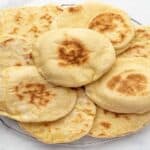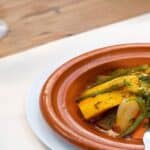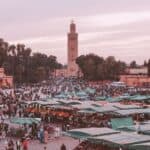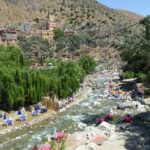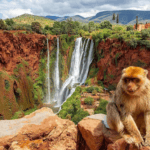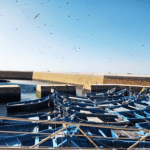Discover the enchanting town of Rissani, a hidden gem nestled near Erfoud in eastern Morocco. With its rich history, vibrant souks, and unique Saharan culture, Rissani offers a captivating travel experience for those seeking an off-the-beaten-path destination.
- Rissani is a town located near Erfoud in eastern Morocco, known for its rich history and unique Saharan culture.
- With its lively souks and bustling market days, Rissani offers a vibrant shopping experience for traditional Moroccan items.
- Explore the architectural treasures of Rissani, including the ancient ksars and the historic Moulay Ali Cherif Zaouia.
- Experience the cultural diversity of Rissani through interactions with the local Berber, Arab, and desert communities.
- Rissani is a must-visit destination for anyone traveling to Morocco, offering an authentic and immersive travel experience.
The Vibrant Souks of Rissani
Rissani’s souks are a major attraction for visitors to the town. The souks are particularly lively on Tuesdays, Thursdays, and Sundays, which are the busiest market days. The souks offer a unique opportunity to experience Moroccan shopping traditions. Visitors can haggle for traditional items like rugs, spices, and jewelry. The famous Saturday souk is a great place to find traditional Moroccan rugs. Near the souk entrance, there are also fossil vendors selling marble, stone, and mineral pieces. Another interesting experience is to wander through the morning livestock souk, where donkeys are traded and intricately decorated saddles can be examined.
With their bustling atmosphere and vibrant colors, the Rissani souks provide a sensory feast for shoppers. The narrow streets are lined with shops and stalls, each overflowing with a wide variety of products. From the aroma of authentic spices to the intricate designs of handmade jewelry, the souks offer an array of treasures waiting to be discovered.
| Traditional Items | Description |
|---|---|
| Rugs | Handwoven Moroccan rugs, known for their vibrant colors and intricate patterns. |
| Spices | Aromatic spices like cumin, saffron, and paprika add flavor to Moroccan cuisine. |
| Jewelry | Exquisite silver and gold jewelry adorned with gemstones and traditional Berber motifs. |
| Fossils | Mineral and fossil pieces, including marble, stone, and ancient marine life, are unique souvenirs. |
Amidst the hustle and bustle of the souks, visitors can engage in the age-old tradition of haggling. Bargaining is not only expected but also a way to immerse oneself in the local culture. By negotiating prices, visitors can secure the best deals and create memorable interactions with the friendly and charismatic shopkeepers.
As you wander through the vibrant souks, be sure to take in the sights and sounds of the bustling market. From the colorful textiles hanging in the shops to the vendors passionately showcasing their wares, the souks offer an authentic taste of Moroccan shopping.
Quotes:
“The Rissani souks are a treasure trove of Moroccan culture and craftsmanship.” – Local artisan
“Visiting the souks in Rissani is like stepping back in time and experiencing the traditional Moroccan market atmosphere.” – Travel enthusiast
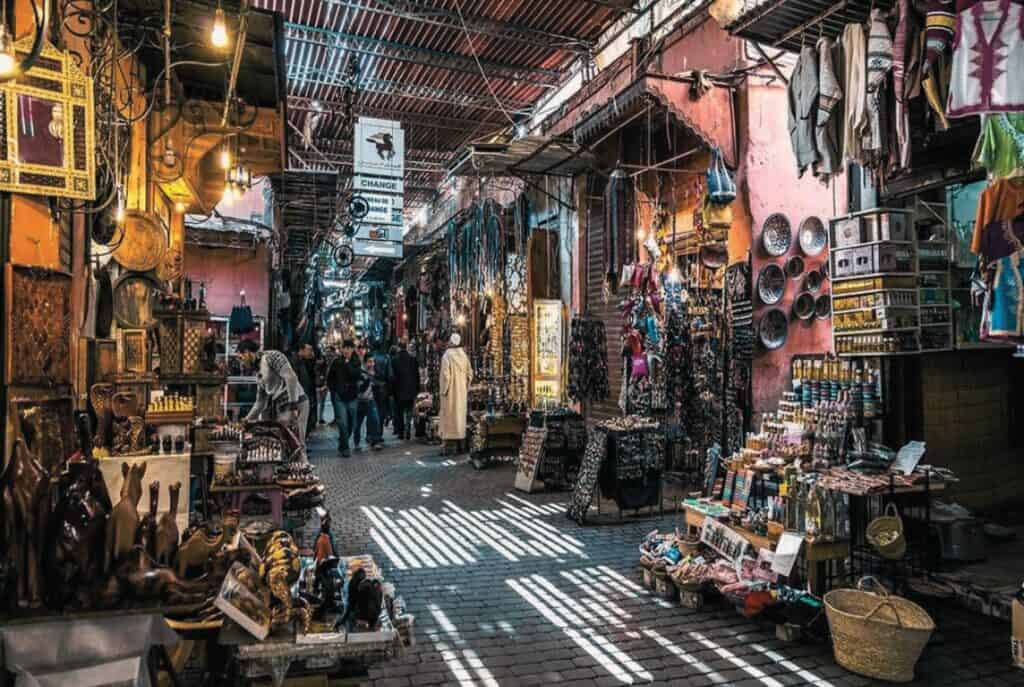
Must-Buy Items at Rissani Souks:
- Handwoven Moroccan rugs
- Aromatic spices
- Traditional silver and gold jewelry
- Unique mineral and fossil pieces
Exploring the Architectural Treasures of Rissani
Rissani is home to some impressive architectural landmarks. Two notable ones are the ksars, or fortified villages, of Ksar Oulad Abdelhalim and Ksar El Fida.
Ksar Oulad Abdelhalim, dating back to the 14th century, was the residence of the sultan’s regional representative. Despite its current state of disrepair, it still offers glimpses of its former grandeur.
Ksar El Fida, on the other hand, is in a dignified state and even has a museum. This ksar served as a palace and commercial caravan checkpoint.
Another architectural treasure is the Moulay Ali Cherif Zaouia, an old fortress where the founder of the Alawite dynasty, Moulay Ali Cherif, is laid to rest. Unfortunately, entrance to the sacred areas is restricted to non-Muslims.
Lastly, Sijilmasa, an 8th-century Berber settlement on the Trans-Saharan trade route, is worth a visit despite its current state of disrepair.
| Architectural Landmarks | Description |
|---|---|
| Ksar Oulad Abdelhalim | The residence of the sultan’s regional representative dating back to the 14th century |
| Ksar El Fida | A dignified ksar that served as a palace and commercial caravan checkpoint, with a museum |
| Moulay Ali Cherif Zaouia | An old fortress where the founder of the Alawite dynasty is laid to rest |
| Sijilmasa | An 8th-century Berber settlement on the Trans-Saharan trade route |
Experiencing the Cultural Diversity of Rissani
Rissani is a place where visitors can immerse themselves in the vibrant and diverse cultures of Morocco. The town is a melting pot of Berber, Arab, and desert communities, each with their unique traditions, clothing styles, and vibrant colors.
The cultural diversity of Rissani becomes evident as you wander through the bustling souks. Here, you’ll find an array of colors, scents, and sounds, representing the different communities that call Rissani home. The souks serve as a meeting place for locals, showcasing their craftsmanship, and providing visitors with a glimpse into their daily lives.
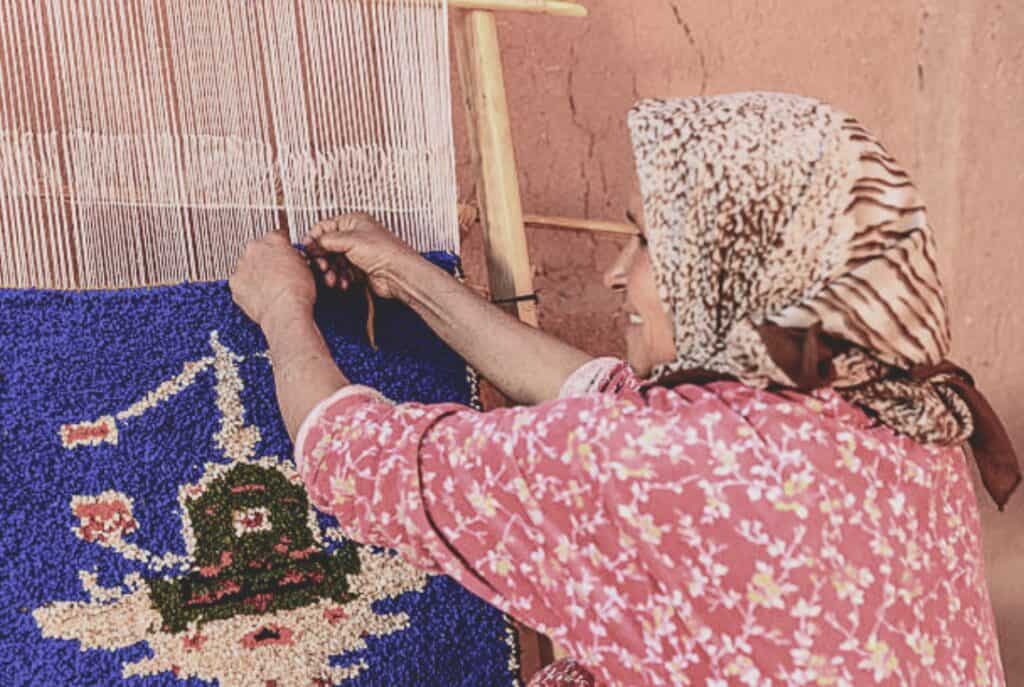
Engaging with the friendly locals is an excellent way to gain insight into the rich cultural heritage of Rissani. Whether bargaining for a traditional Berber rug, sampling authentic Arab spices, or admiring the intricate jewelry crafted by the desert communities, every interaction offers a unique perspective.
The Colorful Wardrobes of Rissani
One of the most striking aspects of Rissani’s cultural diversity is the variety of traditional clothing styles. The Berber communities, known for their indigenous roots, can be identified by their vibrant handwoven textiles and intricate patterns. On the other hand, the Arab communities often wear elegant djellabas, loose-fitting garments adorned with delicate embroidery.
“The cultural diversity of Rissani is a celebration of Morocco’s rich heritage, bringing together different communities in a vibrant tapestry of colors and traditions.”
The desert communities, influenced by the harsh environment, have unique clothing styles that reflect their nomadic lifestyle. You may encounter men wearing flowing robes and turbans, while women often don colorful dresses and elaborate headdresses decorated with shells and beads.
An Unforgettable Cultural Experience
Exploring Rissani’s cultural diversity is not limited to the souks alone. The town’s social fabric is interwoven with traditional celebrations, such as the annual Imilchil Marriage Festival, where Berber tribes gather to celebrate love and unity. These festivals provide an opportunity for visitors to witness traditional song, dance, and ceremonies.
“Rissani’s cultural diversity is a testament to the harmonious coexistence of different communities, fostering a sense of unity and pride in their shared heritage.”
As you delve deeper into Rissani’s cultural tapestry, you’ll discover that the town’s heritage extends beyond its markets and attire. The ancient Berber and Arab villages surrounding Rissani offer a glimpse into the ancestral ways of life, where traditional farming, music, and storytelling still hold great importance.
| Community | Distinctive Features |
|---|---|
| Berber | Vibrant handwoven textiles, intricate patterns |
| Arab | Elegant djellabas, delicate embroidery |
| Desert communities | Flowing robes, turbans, colorful dresses, elaborate headdresses |
Exploring the cultural diversity of Rissani is an enriching and unforgettable experience. It offers a window into the lives of the Berber, Arab, and desert communities, each contributing to the town’s vibrant tapestry of traditions. From the bustling souks to the enchanting festivals, Rissani is a testament to Morocco’s cultural richness.
Conclusion
Rissani, a hidden gem in Morocco, offers a unique travel experience that shouldn’t be missed. With its vibrant souks and traditional shopping opportunities, you can immerse yourself in the rich culture and history of this must-visit destination. Whether you’re haggling for souvenirs or exploring the town’s architectural treasures, Rissani will captivate you with its charm.
One of the highlights of Rissani is its cultural diversity, where Berber, Arab, and desert communities come together. You’ll witness the distinct clothing styles and colors of these communities, gaining valuable insight into their daily lives and traditions. Rissani truly embodies the essence of Morocco’s diverse heritage.
When planning your next trip to Morocco, make sure to include Rissani in your itinerary. It’s the perfect place to immerse yourself in local culture, experience the vibrant souks, and explore the architectural wonders. Rissani is a must-visit destination that will leave you with unforgettable memories of your Morocco travel.
FAQ
What is the population of Rissani?
Rissani has a population of 20,469.
What is Rissani known for?
Rissani is known for its rich history, vibrant souks, and unique Saharan culture.
What is the largest sand desert in Morocco?
The largest sand desert in Morocco is Erg Chebbi, located near Rissani.
What are the busiest market days in Rissani?
The busiest market days in Rissani are Tuesdays, Thursdays, and Sundays.
What can visitors find in Rissani souks?
Visitors can find traditional items like rugs, spices, and jewelry in the souks of Rissani.
What is the famous souk for finding Moroccan rugs?
The famous Saturday souk in Rissani is a great place to find traditional Moroccan rugs.
What can be found near the souk entrance in Rissani?
Near the souk entrance in Rissani, there are fossil vendors selling marble, stone, and mineral pieces.
What architectural landmarks can be found in Rissani?
Two notable architectural landmarks in Rissani are the ksars of Ksar Oulad Abdelhalim and Ksar El Fida.
What is the significance of Ksar Oulad Abdelhalim?
Ksar Oulad Abdelhalim, dating back to the 14th century, was the residence of the sultan’s regional representative.
What is the Moulay Ali Cherif Zaouia?
The Moulay Ali Cherif Zaouia is an old fortress in Rissani where the founder of the Alawite dynasty is laid to rest.
What cultural communities can be found in Rissani?
Rissani is home to a mix of Berber, Arab, and desert communities, each identifiable by their distinctive clothing styles and colors.



